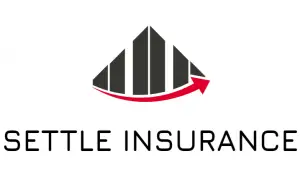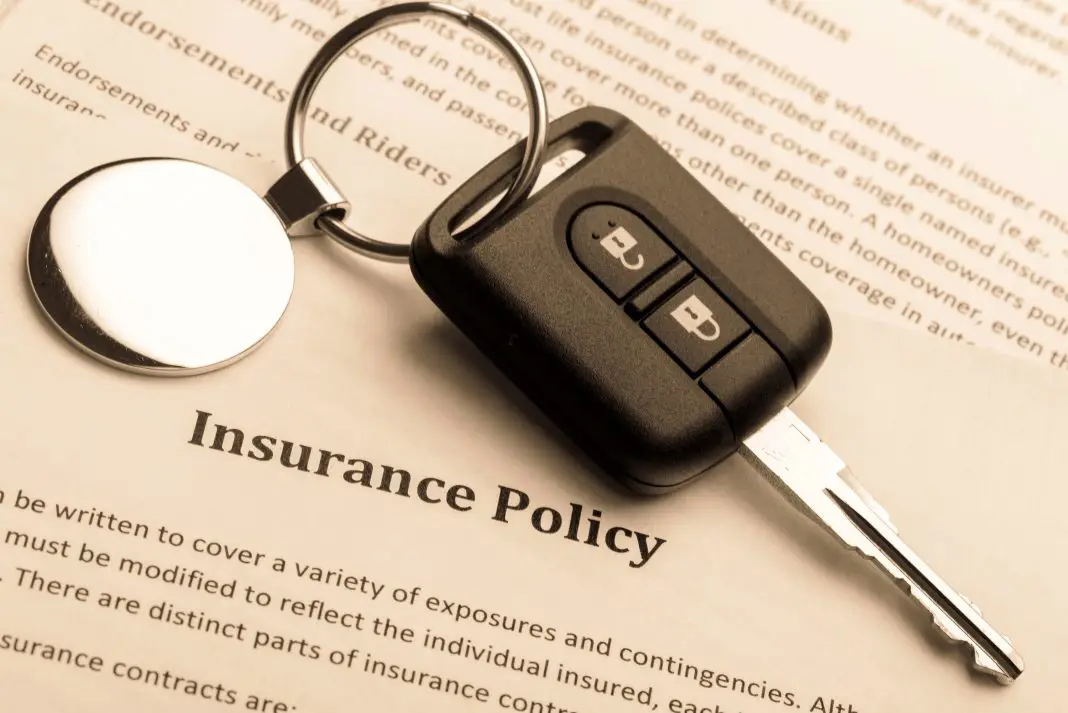“This post may contain affiliate links, if you click a link we may earn a commission if you purchase from that merchant.”
Ever wonder how auto insurance companies come up with their prices and why the auto insurance premiums are different from one insurance company to the next?
Insurance firms collect precise details, in a nutshell, to decide how much of a danger you pose and how likely you are to file a lawsuit.
The data, the rating factors, are weighted differently by each company, and their estimates are made separately, which is why insurers have different rate offers.
When you fill in a quote form, the insurance provider gathers information about risk factors that influence auto insurance rates.
Then, the company’s algorithms go to work behind the scenes to make an informed guess on your risk level and measure your rate quote. The more confident you seem, the less you’ll pay. The riskier you appear, the more you will pay for car insurance.
It goes without saying that if you cannot afford insurance for a particular asset, they should not have it at all in the first place. Everyone wants to get the most economical insurance cover they can get.
It is essential always to ensure that you are adequately covered. There are a lot of factors that determine how expensive or economical your premiums are.
Luckily, there are many among these factors that you can easily control.
The primary determinant of your premiums is the value of your car. The first thing your insurance company will do is value your vehicle.
That means that the more expensive your car is, the more the premiums you are going to pay. In sections that follow, we are going to explore the various factors that are in your control.
There are few factors such as your driving habits, demographic characteristics, age, gender, education, and marital status that affect your auto insurance premiums.
Table of Contents
Explore what you can do to keep your auto insurance premiums at a minimum.
1. Your Personal Characteristics?
Your Age
“The younger the driver, the higher the rates” could be the auto insurance mantra.
Young, inexperienced drivers have shown statistically that they are immature behind the wheel, quick to distract, and crash – a lot – so they are the most dangerous type of insurance drivers.
For different insurers, premiums decrease at other times, but the rates will typically drop as much as 20 percent when you turn 25.
A study found that drivers between the ages of 30 and 69 are much less likely to crash.
Usually, auto insurance premiums remain reasonably flat for drivers when they become senior drivers if you keep a clean record.
Gender
Most states allow insurers to rate on gender because accident statistics are different for males and females.
Data shows that males are more likely to crash – especially when they are known to be more aggressive as an inexperienced driver in the early years of driving.
A study found that males usually travel more males than females and engage in riskier driving behavior, such as speeding, driving while intoxicated, and not wearing a seat belt.
The study has also discovered that incidents involving male drivers appear to be more severe than female drivers. Insurers analyze and rate this data accordingly.
That does not mean that men will always pay higher rates than women—gender differences in fatality risk decrease with age.
In general, as men and women reach their 30s, auto insurance rates are similar for both sexes for many insurers, and males may be able to get slightly lower rates than females based on their results.
Marital status
Married couples have been considered significantly less of a concern to insurance companies than their single (including those who are divorced or widowed) counterparts.
It has been found that married couples are less active and safer than single drivers, leading to fewer injuries and claims.
In general, auto insurance premiums can be from 5 to 15 percent lower for married couples due to their marital status.
Education
When calculating your auto insurance premium, automobile insurance providers will look at your education level. It has been found that highly educated drivers are less likely to claim drivers without advanced degrees.
The premium differential, however, can vary. Most studies show that only getting any form of post-secondary education can save from $400 to $700 per year.
Savings differ depending on the amount of education you get. Usually, for auto insurance, a high school dropout would pay around $350 per year more than anyone with a twelfth-grade diploma.
2. Where and how you drive
There are other factors too that decide the premium of your insurance, and these are as follow:-
Your Driving Record
Your premium for auto insurance is likely to be higher than those with a clean driving record if you have been in several accidents.
Chances are you’ll pay more for auto insurance if you’re a new driver and have not had insurance before.
How Much You Drive
Usually, insurers look at how much you use your car.
Someone who has a long drive to work will pay more for insurance than someone who only uses their car on weekends to run errands because more miles behind the wheel means more risk exposure.
Where You Live and Park Your Car
Your car insurance premium can be affected by where you live and where you park your car overnight.
There are usually higher rates of injuries, theft, and vandalism in urban communities than in more rural areas, which means that premiums will be higher.
Driving experience
No doubt about it: novice drivers pose more danger. Anyone who hasn’t driven a vehicle, whether you are 16 or 50 years of age, automatically poses a higher risk to car insurance companies.
A new driver has to pay high premiums on their insurance.
3. Your Vehicle
Type of car your drive
Which car you drive also affects the premium of your insurance. Suppose the data from an insurer says that drivers have been in more incidents with your model car or have filed more claims so that the premiums will be higher.
There are other factors as well that will affect your car insurance premium, and these are as follow:-
- Purchase price
- Theft rate
- Cost of repairs
- Accident rate
- Safety tests
And just because a car does well on safety checks doesn’t mean the insurance will be cheap.
If the cost of fixing or removing the feature is costly, vehicles with extra safety features, such as collision-warning systems, can add to the insurance premium.
For many insurers, there isn’t enough proof the added features are worth a discount.
4. Your car insurance choices
Today we have thousands of car insurance companies that bring several plans for each individual. It depends upon you which car insurance you choose for your car.
The more coverage you have with higher caps, the more it will cost you as the insurer takes more risk by offering more coverage for you.
Check the state provisions, bearing in mind that minimums in a significant accident would not always cut it, and compare quotes to see if your financial condition makes sense for additional coverage and security.
Below we have mentioned the main coverage components of a policy:
- Liability
- Collision and comprehensive.
- Uninsured/underinsured motorist.
- Medical payments or personal injury protection.
Insurance firms find that people without a policy lapse are less likely to get into an accident, which will help you get a better deal by getting a continuous car insurance background.
It does not matter if your previous auto insurance policy was with your new insurer or anyone else.
Still, you would possibly receive a loyalty discount if you continue consistent coverage with the same provider for at least a couple of years.
You can also ask for a deal if you are again purchasing the insurance from the same company.
5. Safety/Driving Record:
Woe unto you if your driving/safety record is full of parking tickets, license suspensions, and convictions for road-use related offenses.
Insurers will consider you a high-risk driver, and your premiums are going to soar with every negative mark. The cleaner your driving record is, the lower your premiums are going to be.
If your record is already causing some complications, there are several things you can do to bring down the insurance premiums.
One, you could exclude yourself from driving the car. If in the policy, you prohibit yourself or any other high-risk driver from operating the insured vehicle.
The premiums will undoubtedly go down. Also, reducing your use of the car might help scale down the premiums.
» MORE: Best Auto Insurance Companies of 2021
6. Where you live and drive:
Certain areas are considered high-risk to drive in. Places with denser traffic are considered to have higher risks.
If you use your vehicle in places with sparse traffic, your car insurance premiums are going to go down.
Generally, you will find that insurance costs for a car driven in the city are going to be lower than those of a vehicle driven upcountry.
7. Combining Insurance Covers:
You can connect your auto insurance coverage with your home insurance cover to reduce the premiums. Many insurance companies are coming up with creative insurance packages for their clients.
There are a lot of packages that you can choose according to your preference.
The packages attract a much lower premium as compared to the total amount you would pay if you were to get separate policies for each of the insured aspects or properties.
» MORE: Learning The Basics of Car Insurance
Insurance companies are coming up with unique products every day. As such, the factors affecting premiums are different from one insurer to the next.
You need to consult closely with your insurance consultant to find out where you are going to get the best deal.
Take time to dig deep and compare the various offers that are available to you, so that you can settle on one that is gentle to your pocket.
How to lower your rates
Before you buy a car, compare insurance costs.
All general insurance providers provide online coverage. Car companies also have ‘free’ insurance, but don’t be fooled. It usually is only free for the first year and cannot be customized.
Check for insurance premiums before you purchase a new or used car. Car insurance rates are partly dependent on the vehicle’s price, the cost of fixing it, its overall safety record, and the risk of theft.
Drive carefully
Car insurance companies offer safe driver discounts that can cut the cost of premiums. The more you rack up moving violations, the higher your premiums will increase.
Any rule violated by the driver of a vehicle when it is in motion is a moving violation.
Ask About Additional Discounts
Good drivers help make money for insurance firms. For that reason, businesses like Liberty Mutual beat the competition by giving discounts to those with clean driving records.
That means you will be credited for not getting traffic violations, etc. Companies provide discounts to policyholders who, for several years, have not had any injuries or accidents.
If you take a defensive driving course, you may also get a discount. There are special discounts for students too.
Choose your vehicle thoughtfully.
You will want to shop around for vehicles that offer updated safety features if you are on the market for a new car, as these features may result in a lower car insurance premium.
Airbags and anti-lock brakes are one place to start. Still, for even lower car insurance rates, you might even want to consider vehicles that offer crash detection, automatic braking, or blind-spot safety.
Consider a higher deductible.
Before your insurance policy kicks off, deductibles are what you pay. You will significantly lower the expenses by requesting higher deductibles.
Increasing your deduction from $200 to $500, for example, could reduce the cost of your accident and extensive coverage by 15 to 30 percent. Having a deductible of $1,000 will save you 40 percent or more.



































